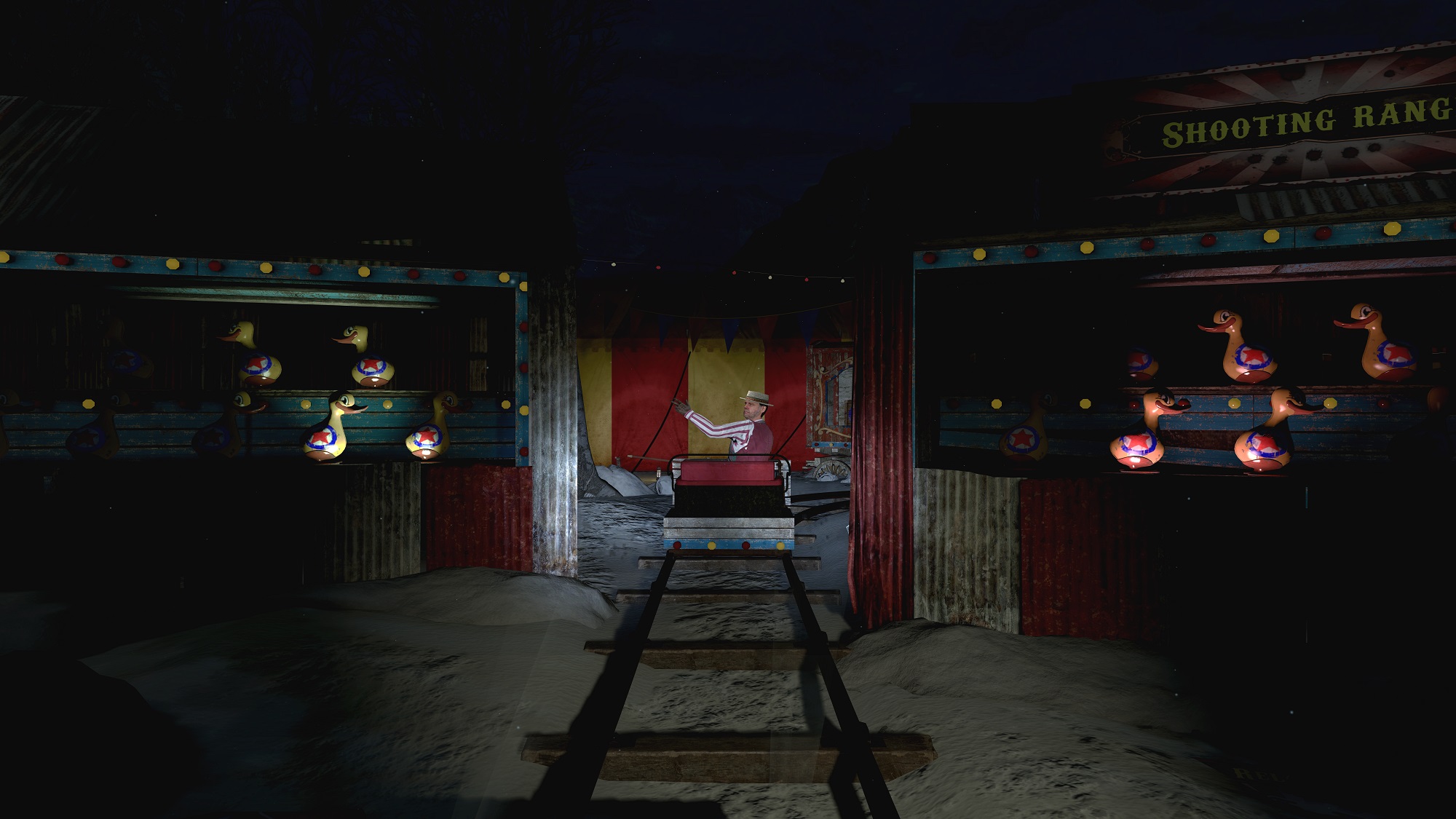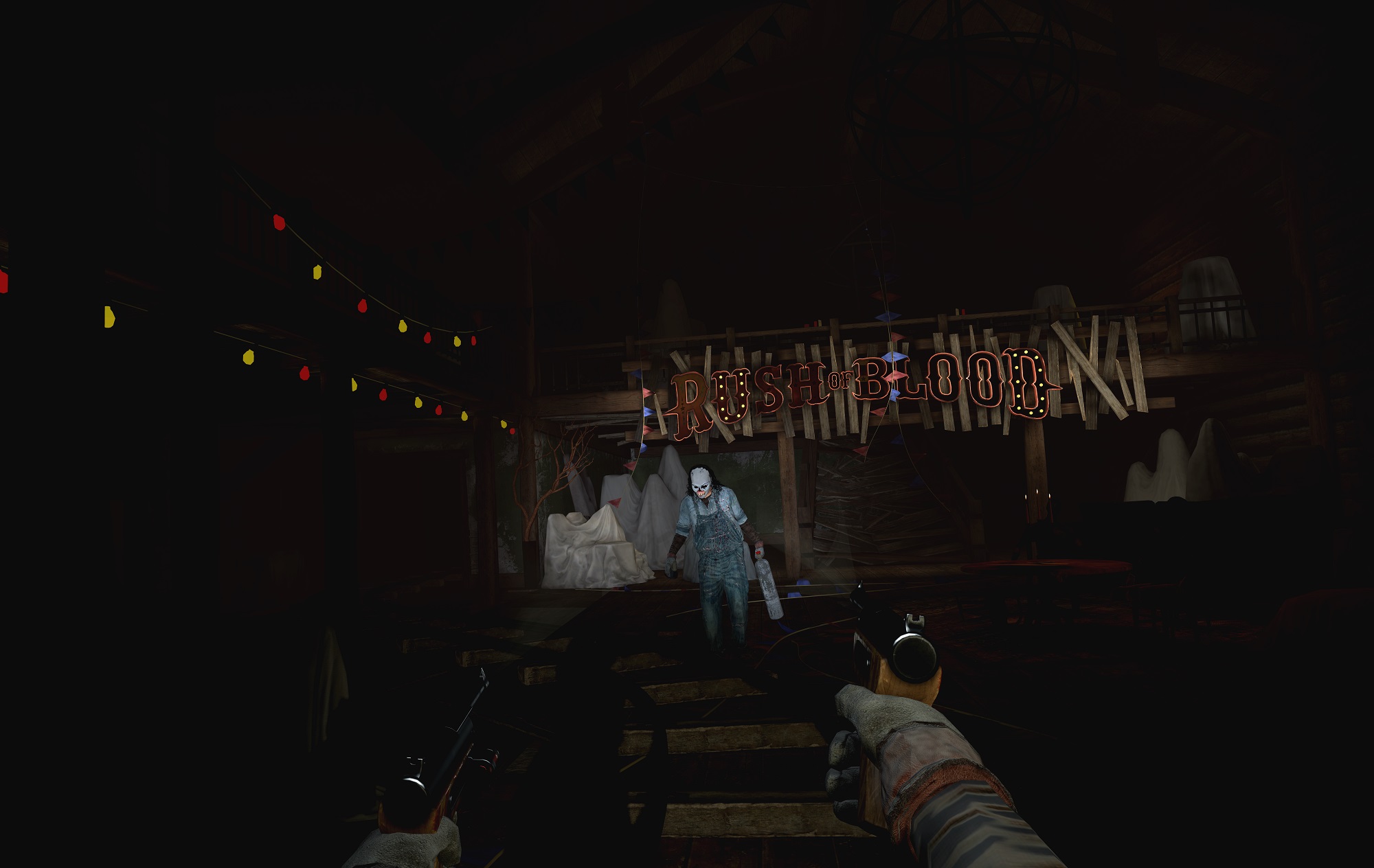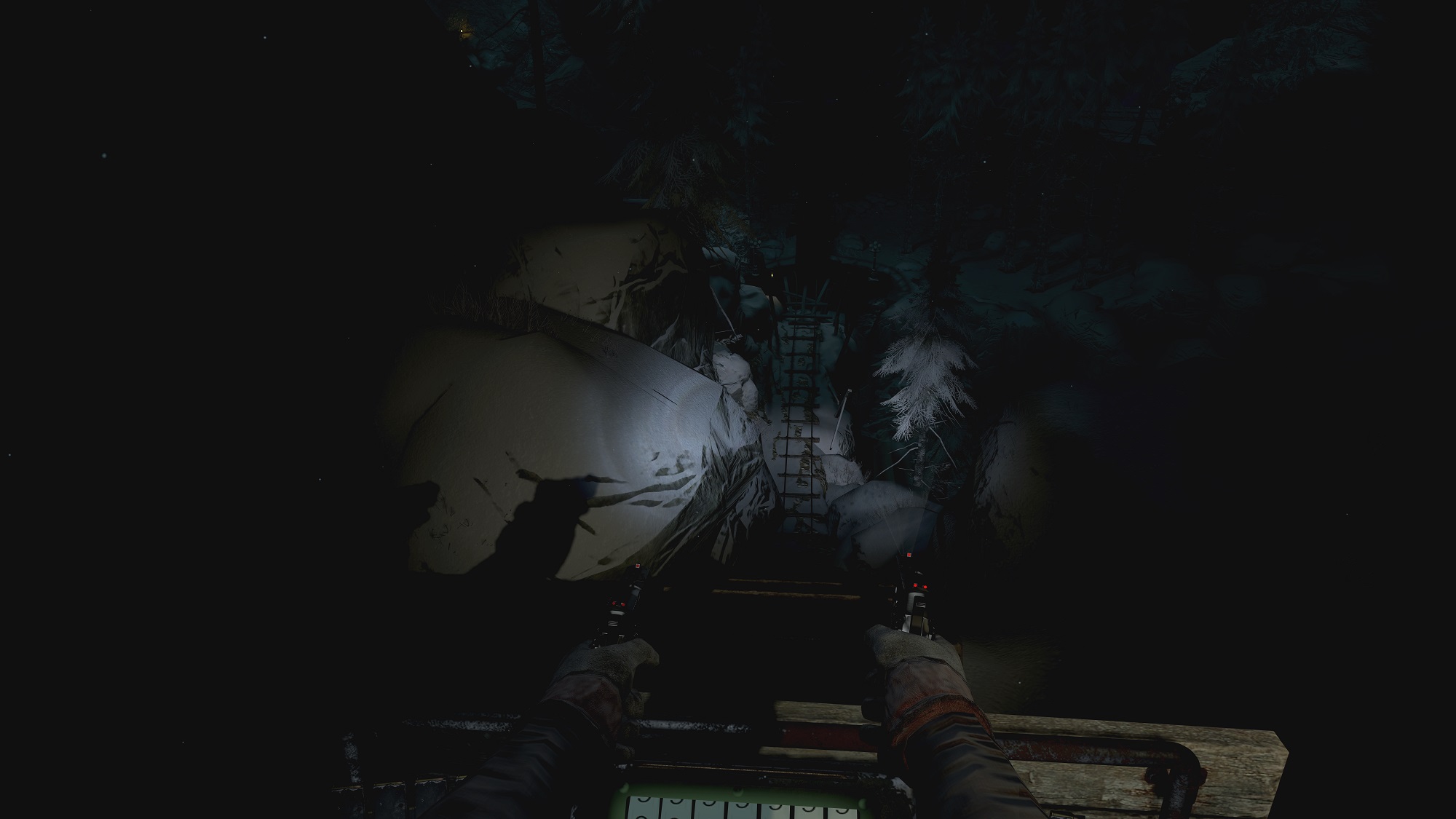Until Dawn, which released from Supermassive Games in 2015, is one of my favorite titles for the PlayStation 4 so far. It combines excellent acting and voice work, with a compelling setting, cheesy horror movie tropes, diverse characters, and an addicting ‘choose-your-own-adventure’ premise into a fun, guilty-pleasure package. I played the entire multi-hour long game in just two sittings, yelling and screaming my way to the very end with my wife by my side.
When I told her that the PlayStation VR headset was getting a scarier, more action-packed sequel to one of our favorite games, she was naturally excited. While Until Dawn: Rush of Blood may not initially seem like anything more than an easy plastering of a franchise name onto an otherwise unrelated game, it’s actually one of the smartest and most entertaining launch titles coming to Sony’s VR headset. She happily watched me squirm and yell inside my headset for another go-around.
When this Until Dawn VR spinoff was first debuted, I had severe doubts. The original game is all about slow-paced, immersive, world building and suspense surrounding a cast of lovably dumb characters. The power to choose who lives or dies by way of my own actions is thrilling — it’s the same concept that made Heavy Rain such a success. Now Supermassive had thrown away all of those elements that made Until Dawn so memorable and tacked on seemingly shallow gameplay into an on-rails shooter chocked full of jump scares.
Even though that description is mostly accurate, what we’re actually left with is an intense thrill ride that I didn’t quite see coming. The entire game is played from the first-person perspective, which is quickly becoming the go-to format for the most immersive VR experiences. You’re dual-wielding guns while riding in a rundown coaster through a creepy, dilapidated old carnival setting. The game does a great job of slowly introducing you to its mechanics through this format.
First, you’re gunning down targets and rubber duckies, then mannequins, and before long you’re barreling around corners at top speed. It’s an exhilarating feeling that really captures the sense of momentum. Throughout levels you can shoot boxes and items to build up your score multiplier and even unlock new weapons — like grenade launchers and shotguns — to mow down your enemies more effectively.
The whole game takes about 3 hours to complete, which felt like a decent length, although I wanted more. Target practice modes, or silly coaster tracks would have been nice additions. Fans of the original game will recognize many of the levels and will appreciate the callouts and references to past events. Suffice it to say that, as neither a prequel nor a sequel, Rush of Blood takes place entirely inside the mind of one of the first game’s protagonists. If you played it, then you should remember someone in particular that suffered from some violent mental instability.
The game’s handful of characters feed you bits and pieces of narrative between and during each mission, but it’s really just barely enough to keep you going. Levels consist of you dodging objects as your coaster speeds ahead and mowing down waves of enemies as they come rushing at you from all sides. These moments are where the power of VR is felt the most.
Sitting in a stationary coaster and shooting enemies could have been a decent game in and of itself, but when you add in the power of 3D spatial audio, that’s when things get interesting. On several occasions I’d whip my head around to look towards a baby crying, a girl screaming, or an enemy yelling at me. Those small cues were timed just right so that no matter how many times they happened, they would always find a way to deliver a scare.
When you’re looking straight ahead at a standard television in anticipation of something jumping out at you, it’s easy to turn away or avert your eyes. In VR, you can’t do that. If I look to the side, the enemies still surround me. If I close my eyes, I can still feel and hear the presence of my own terror. Traditional horror games use the environment and world against you, but in VR, developers can not only do that, but they can also turn your own mind against you as well.
After the first night I played the game, I woke up the next morning with vivid images still burned into my brain. I haven’t dreamed about or had nightmares from a video game in years. Playing horror games in VR is awakening a part of my fear that I didn’t know still existed. I really, really hate dolls and mannequins.
Until Dawn: Rush of Blood is, of course, not without its faults. The tracking issues of the PS VR and Move controllers are evident and in some areas there is a noticeable screen door effect with the headset’s resolution. By the end of the game, the gameplay feels both repetitive and often frustrating. Simply dying and repeating content feels like an outdated form of length-padding and rids entire sections of the game of their scare value. If I’m hung up on an annoying boss, the fifth time I try to beat him is no longer terrifying — it’s just pissing me off.
As a result, Until Dawn: Rush of Blood is a game that excels when it’s using the gruesomely detailed world and immersive visuals and audio to truly surround you and penetrate your mind. It had me spinning in circles to see what was coming next, on the edge of my seat in anticipation. Then, during rare moments, I’d hang my head in frustration because I wasn’t able to accurately blast a series of flying puss balls in time. A rude reminder that this is still, in fact, a video game, with boss fights, and annoying progression roadblocks.
Until Dawn: Rush of Blood delivers on the promise of pulse-pounding scares and has enough context to feel like an adequate follow-up to the excellent previous game. It may not resemble the franchise’s core values at first glance, but what you’ll find beneath the surface is a game that swaps the sophisticated character development of its predecessor for a sophisticated interpretation of horror genre tropes.
Until Dawn: Rush of Blood will be available for PlayStation VR on October 13th, at the price of $19.99.
Read our Game Review Guidelines for more information on how we arrived at this score.





























